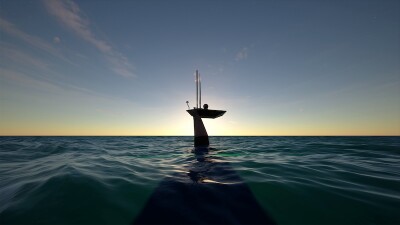The Office of Naval Research’s 132’ trimaran Sea Hunter became the first ship to successfully autonomously navigate from San Diego to Pearl Harbor, Hawaii, and back according to ONR’s program contractor.
The Sea Hunter was designed by Leidos, the Reston, Va., science and technology company that started as defense contractor SAIC in the 1960s, and built by Vigor Industrial at its Portland Ore., facility. Conceived by the Defense Advanced Research Projects Agency (DARPA) as an unmanned vessel for minesweeping and anti-submarine operations, the twin-screw Sea Hunter has been tested since 2016 in a program continuing through 2019.
The recent Pearl Harbor mission was completed without a single crew member onboard, except during brief boardings by personnel from an accompanying escort vessel who boarded the Sea Hunter to check electrical and propulsion systems, according to Leidos.
ONR has awarded Leidos a potential $43.5 million contract to build and test the Sea Hunter II, now under construction with delivery expected in 2020.
Designated as a medium displacement unmanned surface vessel (MDUSV), the Sea Hunter is designed to be capable to travel for long periods of time at speeds up to 27 knots and execute a variety of missions at a fraction of the cost for a manned ship.
“The Sea Hunter program is leading the world in unmanned, fully autonomous naval ship design and production,” said Gerry Fasano, president of Leidos Defense Group. “The recent long-range mission is the first of its kind and demonstrates to the U.S. Navy that autonomy technology is ready to move from the developmental and experimental stages to advanced mission testing.”
The sistership will be designed based upon lessons learned during the first Sea Hunter build, evolving mission requirements, and further development of autonomy enhancements.
“Our talented team of engineers, scientists and analytical experts have decades of experience that will allow us to deliver a second highly autonomous vessel designed to keep our servicemen and women safe while monitoring the maritime environment,” said Fasano.





